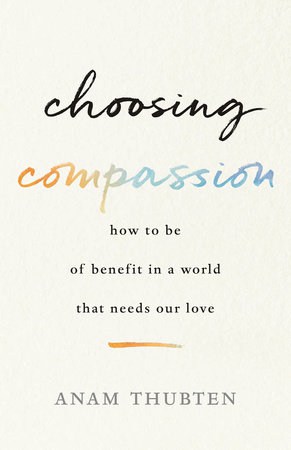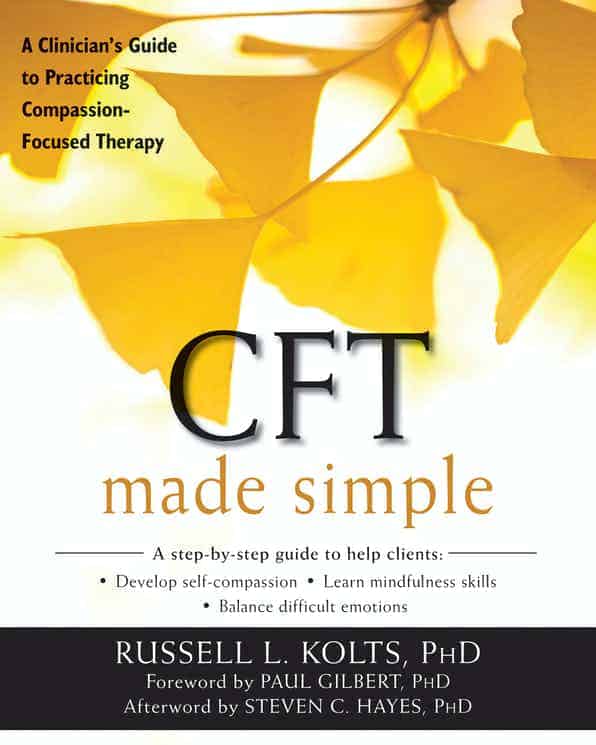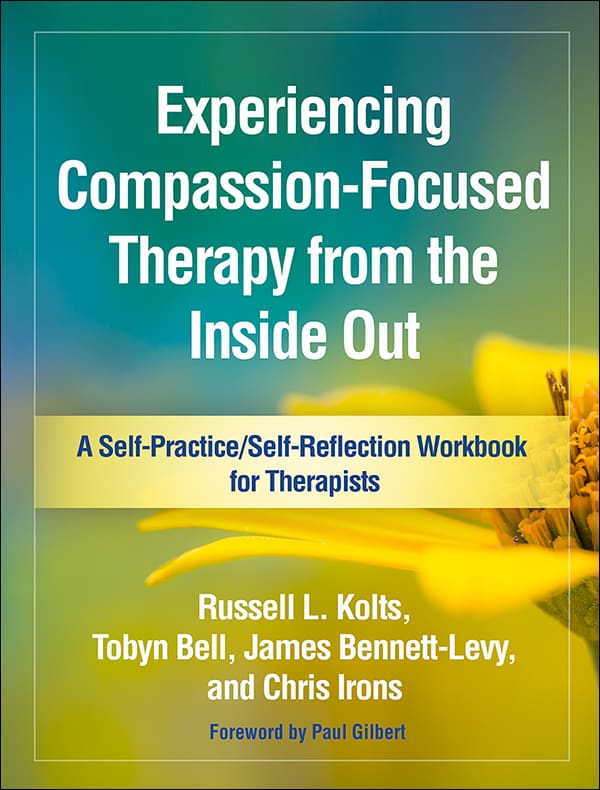Therapy
Compassion-Focused Therapy (CFT): History, Process, Benefits, Effectiveness
THC Editorial Team January 9, 2022

Contents
- Overview
- What Is Compassion-Focused Therapy?
- The History of Compassion-Focused Therapy
- How Compassion-Focused Therapy Works
- Conditions Commonly Treated With CFT
- The Potential Benefits of Compassion-Focused Therapy
- The Effectiveness of Compassion-Focused Therapy
- Summary and Outlook
What Is Compassion-Focused Therapy?
Compassion-focused therapy, or CFT, is a therapeutic practice that emphasizes compassion towards oneself and others to promote emotional healing. CFT defines compassion as “a sensitivity to suffering in self and others, with a commitment to try to alleviate and prevent it.”1
Proponents of CFT believe that as an emotional response, compassion is essential for psychological and emotional well-being. Therefore, people who learn to develop a more compassionate response toward themselves and others might experience improvements in their emotional and psychological health. CFT is typically offered as a part of a therapist’s clinical practice to support clients who want to explore ways to relate to others and themselves with more compassion.
CFT is designed to help individuals with high levels of self-criticism and shame. People who experience intense self-criticism and shame might struggle to feel safe, at ease, or assured, making it more difficult for them to lead fulfilling lives. CFT posits that feelings of well-being, safety, and assurance are underpinned by specialized emotional regulation systems, which we experience as a feeling of compassion directed toward ourselves and others.
Proponents of CFT hypothesize that people with high levels of self-criticism and shame have trouble accessing these emotional regulation systems because their minds tend to be more focused on detecting internal and external threats. To address these concerns, CFT uses compassionate mind training to enable clients to develop compassion and self-compassion by working with experiences of safety, soothing, and inner warmth.1
One of the goals of CFT is that “The ‘compassionate’ self becomes a focal inner sense or grounded position associated with organizing ways of attending, feeling, thinking, and behaving.”1
The History of Compassion-Focused Therapy
British psychotherapist Paul Gilbert developed CFT during the early 2000s, incorporating aspects of the following modalities, principles, and techniques:2
- cognitive behavioral therapy (CBT)
- Buddhist philosophy
- neuroscience
- evolutionary psychology
- social psychology
- developmental psychology
According to Gilbert, CFT was borne from the following understanding:1
- The human brain, as well as mental health conditions, are products of evolution.
- The human brain is designed for social processing and is highly affected by relationship frameworks. Relationships that are affectionate and caring lead to psychological benefits.
- Our relationship with ourselves has a strong effect on our psychological well-being. Notably, high self-criticism and shame can lead to worse mental health conditions.
- The question of what correlation humans’ recent cognitive evolution has with much earlier evolutionary conditions.
- Compassion training has numerous physical, psychological, and therapeutic benefits, including for people with severe mental conditions.
According to Gilbert, CFT is based on the modern understanding of the various systems of emotional regulation, including the threat detection system, the social safeness system, and the motivation and excitement system. CFT focuses on the association between human behavior and thought and aims to balance the three emotional regulation systems.2
Although many therapies highlight the importance of (the therapeutic) relationships in change process, CFT highlights the abilities to facilitate and experience affiliative emotions (via compassion), because these have their own physiological profiles that facilitate the regulation of feared emotions and often provide the courage to engage with feared emotions. –Paul Gilbert1
Professor Gilbert founded the Compassionate Mind Foundation in 2006, a charity based in England and Wales that promotes and supports CFT and compassionate mind training. In 2011, Gilbert was awarded the Order of the British Empire to recognize his contributions to psychology.3
How Compassion-Focused Therapy Works
CFT therapists believe that the emotional regulation systems involving threats, contentment, and drive evolved to facilitate human survival. In ancient times, humans were motivated to overcome and avoid threats, function within a social society, and find food and other resources. CFT practitioners believe that these basic systems still affect human behavior, emotions, beliefs, and actions. For example, when an individual encounters a threatening stimulus, they might have a fight-or-flight response (behavior, actions); experience anger, anxiety, or fear (emotions); and develop different types of cognitive biases (beliefs).2
CFT views individuals as being directed to crucial resources and goals by the drive system. When they obtain these resources, this system is believed to cause feelings of pleasure. People whose drive systems are overstimulated might tend to engage in risk-taking behaviors, such as substance abuse.2 Researchers have found CFT to be an effective treatment for substance abuse, particularly opioid use disorder, because it treats the high self-criticism and low self-esteem common to drug abusers.4
According to CFT, an individual’s contentment system is associated with their happiness. Unlike the drive system, the contentment system is not related to pleasure-seeking behaviors. Instead, this system helps people experience a calm state tied to feelings of social connectedness, safety, and being cared for. The contentment system works to regulate the drive and threat systems in a soothing way.2
In CFT, therapists use compassionate mind training to enable clients to develop compassion for others and themselves, which further develops the contentment system. Compassionate mind training helps clients cultivate sympathy, compassion, and tolerance for distress through guided exercises to develop nonjudgmental responses.2
Therapists help clients learn appreciation through activities that emphasize what they enjoy. For example, a client might be asked to list the things they like, take time to notice when something enjoyable occurs, and receive rewards for engaging in pleasurable activities. Mindfulness—learning to pay attention in the present moment nonjudgmentally—also plays an important role in therapy.2
CFT therapists might also use guided fantasies and memories to help clients stimulate their minds and physiological systems. These imagery exercises aim to help individuals produce images that promote feelings of contentment and soothing.
Finally, when clients experience high levels of self-criticism, CFT therapists might help them explore its origins, functions, and reasons they submit to these feelings. Individuals might be asked to visualize self-criticism as a person and describe what they look like and what emotions they evoke to better understand self-criticism.
Conditions Commonly Treated With CFT
Compassion-focused therapy is used to help people who have difficulty with feeling, expressing, or understanding compassion. CFT can offer a safe place through which clients can explore the reasons underlying this issue and how they might achieve positive change. CFT can also help people manage distressing feelings, behaviors, and thoughts and can be especially helpful in dealing with self-criticism.
Some of the conditions for which CFT might be used include the following:
- hoarding disorder5
- obsessive-compulsive disorder6
- anxiety disorder6
- depression6
- eating disorders6
- self-harm6
- schizophrenia-spectrum disorder6
- psychosis6
- bipolar affective disorder6
- self-criticism2
- shame2
People who have any of these issues might want to discuss CFT with a therapist to determine whether this therapeutic approach might be helpful for them. While CFT might help people achieve an overall improvement in well-being, it might not be the best approach for specific issues and/or individuals. People who receive this type of treatment must feel comfortable having others soothe or care for them. CFT may be suitable for clients with damaged or traumatic early attachment relationships. These clients may find it more challenging to work with these issues in other forms of talk-based therapy.7
The Potential Benefits of Compassion-Focused Therapy
As mentioned above, CFT might be beneficial for people who show high levels of self-criticism and shame. Additionally, a comprehensive review of 14 studies showed evidence that CFT might help to reduce symptoms of depression, anxiety, psychosis, and hallucinations.6
Some of the potential benefits of CFT include the following:
- increased self-compassion6
- increased sympathy and empathy
- increased happiness6
- improved self-esteem
- reduced shame6
- reduced anger6
- reduced self-hatred6
- reduced self-harm
- reduced symptoms of anxiety or depression6
- improved ability to relate to others6
- increased mindfulness6,8
- decrease in rumination6,8
- effectiveness with some clients who have not responded well to CBT5
- a tool for enhanced self-help among the general population9
The Effectiveness of Compassion-Focused Therapy
As a relatively new therapeutic approach, the literature on compassion-focused therapy is still somewhat limited. However, researchers have investigated the efficacy of this therapeutic approach for treating several conditions, including hoarding, eating disorders, psychosis, and personality disorders, among others.
In a study that examined the effectiveness of CFT with people with hoarding disorder who did not respond well to cognitive behavioral treatment, researchers found that 77% of those who received CFT as a follow-up to cognitive behavioral therapy had symptoms that dropped below the cutoff for clinically significant hoarding disorders. By contrast, of those who completed cognitive behavioral therapy only, 29% dropped below the cutoff for clinically significant hoarding disorder after a follow-up session of CBT.5
In a study looking at the impact of incorporating CFT into a standard treatment program for people with eating disorders, researchers found significant reductions of symptoms for those diagnosed with bulimia nervosa, anorexia nervosa, and atypical eating disorders. Of the 99 participants, 77% of those with bulimia nervosa experienced clinically significant reductions of symptoms. The approach was less successful with those diagnosed with anorexia nervosa (21%) and those with atypical eating disorders (30%).10
Researchers compared 22 patients with psychosis who received standard treatment plus CFT to 18 patients who received standard treatment only. They found that those who received CFT in addition to standard treatment demonstrated statistically significant improvements in symptoms and compassion compared to those who received only the standard treatment.11
Finally, a study explored the effect of incorporating CFT in group sessions for people diagnosed with personality disorders. The researchers found that people with personality disorders who also experienced high levels of self-criticism and shame showed higher retention rates in treatment and improved symptoms.12
Summary and Outlook
Compassion-focused therapy might be an effective approach for people with a number of conditions who experience high levels of self-criticism and shame as symptoms of their states. CFT uses compassionate mind training, which consists of guided exercises, visualizations, mindfulness practices, and other interventions to help clients develop compassion for themselves and others.
Research into the efficacy of CFT shows promise. However, the studies that have been conducted featured small sample sizes, and more research should be conducted into the effectiveness of CFT compared to CBT alone in treating various disorders.
“May you be well.
May you be happy.
May you be free from suffering.
And may you bring these things into the world for others.” 3 -Paul Gilbert
























